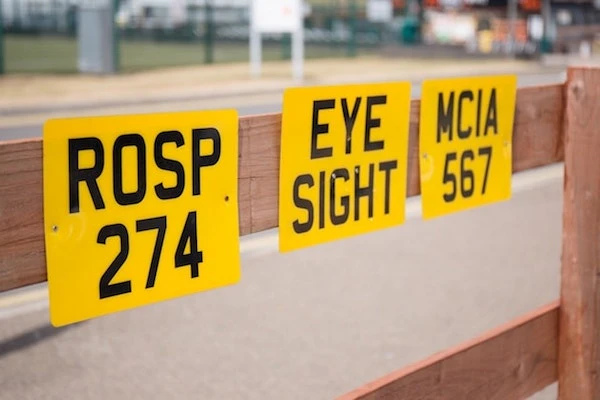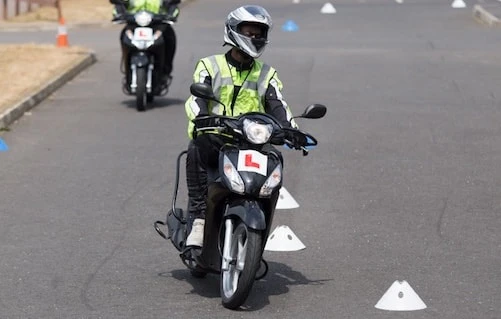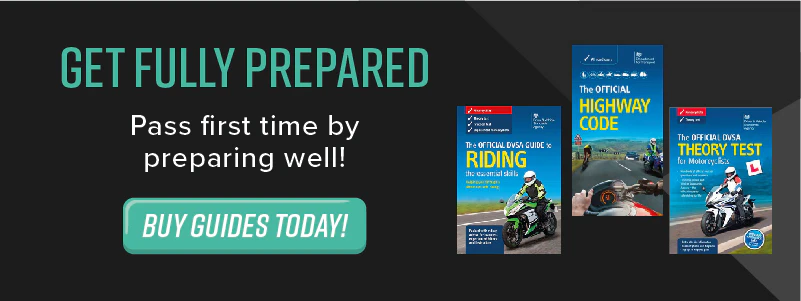back to the blog
CBT Test: The 5 Parts of a CBT | RideTo

Matt D · April 24, 2017
So if you’ve booked your CBT test with us or you just want to know what it entails, you’ve come to the right place. But we're not all talk, our very own Tom took his CBT training recently and has documented how it went, so have a read! It’s good to get an idea of what you’ll have to do on the day and the great news is, all the information you’ll need is included below. Have a quick read, relax and remember; it’s not a test!
1. Introduction And Eye Test:

Before the training begins there are some basic checks you will have to undergo:
This will involve an eye test. This isn’t designed to catch you out but you will have to read a number plate standing 20 meters away. If you usually wear glasses or contact lenses don’t worry. You can still wear these, just don’t forget them!
Next up will be a short introduction from the instructor. They will go through the basics, what to expect from your day and what you will come out with.
Finally before you go any further they will check you have the correct licence and paperwork (see more on that here) to get on the bike and go through the equipment you’ll need to get on a motorcycle. This will include some advice on what is best to wear. If you want to check this too, then have a quick read of our article here.
2. The On-site CBT Training
This is the first real learning section of your CBT test. It will undoubtedly involve lots of whiteboards and drawings.
The ultimate aim of this section is to give you an understanding of how your vehicle works, what maintenance checks are needed and also to get a feel for your bike. Remember it’s not a test! You will be shown how everything works then given the chance to do it yourself to make sure you’re comfortable.
So here’s how it will work, we’ve broken it down into 5 sections:
- Understanding how the vehicle works - You need to know what controls are on your bike and how to find and use them. This will then lead onto broader teaching on how controls work on other vehicles.
- Vehicle checks - In the section you will be taught and have to demonstrate how to carry out some basic vehicle checks. There are many checks covered but these will include oil, coolant, electrics and importantly tyres. The ultimate point of this section is to show that you have the ability and understand the necessity to confirm that your vehicle is fit and roadworthy to ride.
- Using the stand - This will involve a demonstration and teaching of how to safely put your bike off and on the stand. It involves understanding the weight of your vehicle and where potential dangers may arise. Although it sounds simple, it’s something beginners often struggle with. You need to be sure the bike is perfectly upright and rocks onto both legs of the stand.
- Dismounting and pushing the vehicle with control and bringing it to a stop - You will be taught and have to demonstrate how to position yourself to wheel and control your vehicle whilst controlling the weight and brakes as turning. It is likely you will be made to wheel your motorcycle or scooter left and right and then made to bring the bike to a controlled stop using the brakes. Easy!
- Starting and stopping the vehicle engine - So there are essentially three main things to be sure of when starting your engine. You will be showed the most suitable position to take when starting your vehicle. It is then important to learn how to check that the fuel is switched on and the vehicle is in neutral before starting. Finally you will be shown how to make sure you leave your vehicle safely once it’s switched off.
3. The On-site CBT Riding

So here’s where the fun starts. This is when you will finally get to ride your motorcycle or scooter. The end goal of this section is to give you the basic skills so that you can ride safely on a road. There is theory to go along with this too, so it will be a lot of learning.
Essentially you will just have to demonstrate you have some core skills and you are also aware of your surroundings. Your instructor will teach you all the basics you’ll need, this will include basic manoeuvres, changing gears and using your brakes correctly.
There is then an observation section which will include elements such as understanding blind spots and potential visual impairments. They will also include exercises such as bending and U-turns along with mock road situations such as T-Junctions.
By the time you’ve finished this section you will be expected to have demonstrated some competence and understanding of what you have been taught. Observation is key and may save your life, so listen up!
Greats news! It’s usually time for lunch now!
4. On-road CBT Training
This section will include a round up of previously covered areas, so it’s back to the whiteboard for some theory! It will also cover some crucial new information. It’s designed to reinforce the importance of how and why to ride safely and legally on the road.
Ultimately this section is here to teach you how to ride legally, responsibly and safely. So it’s fair to say it’s a pretty important part of your CBT test. It’s quite straightforward so just take some notes and get ready to implement what you’ve learnt later on.
5. On-road Riding
So this is the final element. It will bring together everything you’ve been taught in the previous parts of the course. In this part you will:
- Be reminded of the main traffic situations and hazards you may come across when riding.
- Be given some time to practice the skills to deal with these situations safely.
Once you are confident with this, you will head out onto the road with your instructor. You will ride for at least 2 hours and it is a good opportunity to demonstrate what you have learnt to your instructor. You will be put into groups of no more than 2 pupils per instructor. You will then be asked to perform a U-turn and to prove that you know how to stop when needed as if in an emergency.
This is a great chance to increase your confidence and competence and to prove to your instructor that you are sensible and understand what they've been talking about for the previous hours!
As we said before this is not a test. So don’t worry. We would advise you go in ready to learn and do some reading before so that you’re confident and not taken by surprise. If you want to read the questions we wish we’d asked before taking our CBT then read here. The instructors are there to teach you all they can and make sure you are willing and able to learn so enjoy the day and the chance to learn new skills.
If you want more information on what to expect from your CBT test then you can read the government’s full syllabus and guidance. Or why not read how Tom got on during his CBT?
IF YOU'RE LOOKING TO GET ONTO TWO WHEELS BUT NOT SURE WHERE TO START, WHY NOT TAKE OUR GETTING STARTED SURVEY Click here to start



